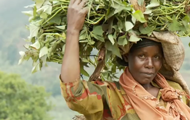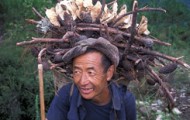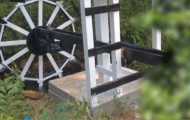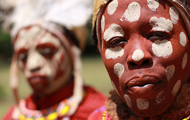ConservationBridge.org was founded with the belief that solving the world’s conservation issues requires more than technology and novel practices. It requires that these technologies, practices and innovations be shared a new generation of conservation practitioners being trained in schools across the US.
What is ConservationBridge?
ConservationBridge.org has been established to act as a hub for sharing knowledge between key organizations dedicated to resolving the world’s conservation problems and the world’s top universities. The goal of ConservationBridge is to bring real-world problems into the classroom in order to provide them with an authentic learning experience. By working on real problems, ConservationBridge allows students to learn about the complexity of working in the field of conservation and gain skills they can use once they graduate.
ConservationBridge.org has a suite of tools for use within university level courses. Professors can help build case studies, choose existing case studies to use in their courses, and assign students to answer practitioner directed questions. A workspace is provided that allows students to collaborate with each other and with practitioners to answer research questions. Students can also post documentation and multi-media to better answer the questions they have been charged with answering and provide better support for practitioners in the field.
Project Leaders
Dr. James P. Lassoie has been a professor in the Department of Natural Resources (DNR), CU since 1976. As Project Director, Lassoie will provide direction, coordination, and oversight for this interdisciplinary, multi-institutional project by serving as the chief liaison between project leaders, advisors, and consultants. He will chair the Steering Committee. Lassoie has extensive experience directing collaborative activities similar to those outlined in this proposal. In 1985 started the Cornell Agroforestry Study Group, which continues to coordinate campus wide agroforestry activities as the Cornell Ecoagriculture Working Group (see L.E. Buck below). In 1991, Lassoie and others developed an interdisciplinary graduate minor in conservation and sustainable development. He helped to establish the Cornell International Institute for Food, Agriculture, and Development (CIIFAD) in 1990 and served on its program committee for many years. In addition, Lassoie helped establish the Cornell Center for the Environment in 1991 and served as its second Director. He was the Chair of DNR for two terms (1988-1993 and 1996-2002).
Dr. Louise E. Buck is Senior Extension Associate in DNR and a faculty associate in CIIFAD. She leads Cornell’s multi-departmental Ecoagriculture Working Group, and is the Director of EP’s Landscape Measures Initiative. She has extensive experience in developing multi-disciplinary on-line curricula and case studies. She developed a cross-departmental, multi-institutional initiative called the How, What and Why of Forest Farming, an instructional platform for facilitating distributed learning communities of educators and landowners. Between 2000 and 2005 Buck was the Curriculum Coordinator for the Global Seminar she worked with faculty from multiple disciplines at universities worldwide to create a reality-based decision case study format for facilitating learning about agriculture and environmental sustainability issues. She also oversaw the development of about 20 case studies, and authored or co-authored several of them.
Mr. Jamie Herring is the President of HabitatSeven, Inc. He will oversee the production of the AB.org technological platform and all multimedia content. Herring has a unique background to accomplish this task. He has two Master’s Degrees (one in Sociology from the University of Ottawa and one in Development Sociology from CU) where he focused on development and environmental issues. He also has an extensive background in on-line database creation for collaborative tools, and video production.
Advisory Board
A globally diverse and dedicated team of advisors drives ConservationBridge.org.
Dr. Steven D. DeGloria is a Professor of Resource Inventory and Analysis in the Department of Crop and Soil Sciences at CU. He also serves as Director for the Cornell Institute for Resource Information Sciences and is the past Chair of his department. DeGloria is a contributing member of the Cornell Ecoagriculture Working Group.
Dr. Antonio DiTommaso is an Associate Professor of Weed Science in the Department of Crop and Soil Sciences at CU. DiTommaso is the Director of the Agricultural Sciences Major. He will incorporate AB.org into the capstone course being developed for this new major.
Dr. Skikui Dong is an Associate Professor of Rangeland Ecology and Management in the School of Environmental Sciences at Beijing Normal University (BNU). He was appointed Adjunct Associate Professor of Natural Resources at CU last fall to help build collaborative programs between BNU and CU.
Dr. Timothy Fahey is a forest ecologist in the Department of Natural Resources at CU. He holds prestigious appointments as a Weiss Presidential Fellow and Liberty Hyde Bailey Professor.
Dr. Gilbert Gillespie is a Senior Research Associate in Development Sociology at CU.
Dr. Julie M. Grossman is currently an NSF Postdoctoral Fellow in the Department of Crop and Soil Sciences at CU. Grossman will begin a new position as an Assistant Professor of Soil Fertility of Organic Cropping Systems at North Carolina State University next summer.
Dr. Marianne E. Krasny is Professor and Chair in Natural Resources at CU, specializing in environmental, science, and sustainability education in the US and overseas.
Dr. David R. Lee is a Professor of Agricultural Economics in the Department of Applied and Managerial Economics at CU
Dr. Alice N. Pell is a Professor of Animal Nutrition in the Department of Animal Sciences at CU and the Director of CIIFAD. Pell’s research includes an interdisciplinary study of poverty and environmental degradation in the Kenyan highlands, which is funded by NSF’s Biocomplexity Program for Coupled Natural and Human Systems.
Dr. Norman T. Uphoff is a Professor of Government at CU, a core member in the Cornell Institute for Public Policy, and the former Director of CIIFAD.
Dr. Donald R. Viands is a Professor in the Department of Plant Breeding & Genetics at Cornell and Associate Dean and Director of Academic Programs for CALS.
Six random posts
Payments for Ecosystem Services (PES) in the Kanyabaha-Rushebeya landscape
Kanyabaha-Rushebeya in Uganda is one of the most densely populated regions in Africa. Of the hundreds of wetlands that used to exist here, only one remains. The wetland is an ...
The Death of Ecotourism in Jisha, China
Ecotourism has been touted as one of the most promising mechanisms to protect natural areas while producing income for local people. This was not the case in Jisha, China. This ...
Climate Change, Food, and ‘Sharing’ among the Iñupiat of Wainwright, Alaska
Indigenous peoples living in high Arctic environments have developed sophisticated ecological and social relationships with the animals, plants, and inanimate objects that define their complex and dynamic habitat. These relations ...
PES in Lijiang, China
The city of Lijian, in southwestern China near the border of Tibet, has become an incredibly popular tourist destination with over 20,000 tourists per day. However, the growth in tourism ...
Precision Irrigation
A large portion of the world’s water is used for agriculture and most of this water is going to waste. Precision Irrigation is a concept and practice that aims to ...
Capturing New Market Opportunities for Farmers in the Kijabe Landscape of Kenya
Sandwiched between wildlife parks rich with internationally awe-inspiring animals, and the Great Rift Valley where some the oldest human remains have been found, the agricultural landscapes of central Kenya’s Kikuyu ...





